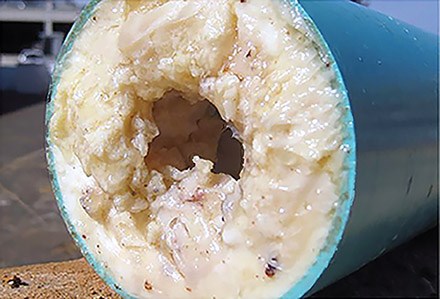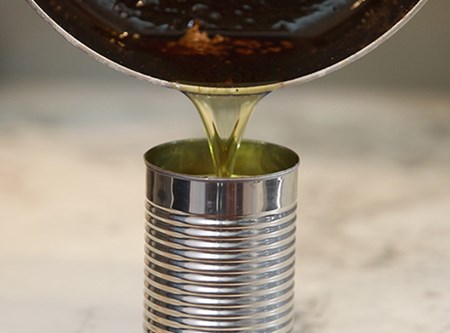Fats, oils and grease, known as FOG, is a serious enemy of our sewer lines. FOG entering the sewer system is one of the most common causes of sewer backups. FOG becomes a problem when food scraps, meat fats, dairy products and other oil-based foods are washed or flushed down the drain.

When FOG enters the sewer system from homes or businesses, it collects in sewer lines, forms clogs and causes backups. These backups may cause damage to homes and restaurants; are harmful to streams, wetland and wildlife; and are expensive to repair. Utility maintenance and repairs caused by FOG can ultimately lead to increased costs for customers.
You can help prevent FOG from entering our sewers by:

It is better to put FOG into the trash than down the drain, and you should collect and seal FOG properly before disposal. Using a small metal or glass container will make FOG collection and disposal safe and easy. Just follow these steps:
Flushing or draining FOG into the sewer system violates local ordinances so restaurants and food preparation businesses must take additional measures to prevent FOG. EWSU has a policy for the design, installation and maintenance of FOG removal systems.
Grease interceptors, or grease traps, should be installed on “gray” water drain lines to remove FOG from wastewater. FOG wastes must then be regularly removed or pumped out of the grease traps. Please refer to the Utility’s policy for the design, installation and maintenance of FOG removal systems.
For questions about grease trap design, maintenance or function, please contact EWSU’s FOG Coordinator, at 812-436-7013. You may also find additional information at the U.S. EPA’s National Pretreatment Program for FOG website.